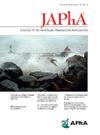在社区药房网络中实施社区卫生工作者模式以解决与健康相关的社会需求:一个实用的评估。
IF 2.5
4区 医学
Q3 PHARMACOLOGY & PHARMACY
Journal of the American Pharmacists Association
Pub Date : 2025-07-26
DOI:10.1016/j.japh.2025.102490
引用次数: 0
摘要
背景:与健康相关的社会需求(HRSNs)显著影响健康结果,社区药房提供了整合HRSNs筛查和转诊服务的机会。将社区卫生工作者(CHWs)嵌入药店可能会提高患者参与度和转诊率,但有关项目可持续性和经济可行性的证据仍然有限。目的:评估在全州范围内实施的以药店为基础的HRSN筛查和转诊项目的关键实施结果,该项目交叉培训药店员工作为chw。方法:2023年1 - 12月,对纽约州15家社区药店进行实用评价。药房工作人员作为卫生保健员进行了交叉培训,使用经过验证的SDoH工具筛选患者,并通过结构化导航平台促进转诊。主要结果是转诊吸收,定义为提交的转诊成功解决的比例。次要结果包括项目保真度、项目在城市和农村地区的覆盖范围,以及使用时间驱动的基于活动的成本核算框架、实施框架和综合成本效益分析评估的经济可持续性。结果:在筛选的1034名参与者中,确定了708个社会需求,其中粮食不安全(24%),住房不稳定(16%)和交通障碍(14%)最为普遍。在发起的330例转诊中,154例(47%)成功解决,64%的筛查在农村地区进行。项目总成本为107,107美元,预计每年可节省成本745,101美元,收益成本比为6.96,投资回报率为596%。盈亏平衡分析表明,在不同的筛查量水平上,财务可持续性取决于报销率。在一系列成本和解决率假设下,财务可行性仍然强劲。结论:在药店内部交叉培训卫生保健员以解决hrsn问题是有效且经济上可持续的。该项目成功地吸引了城市和农村地区的参与者,并取得了很高的转诊解决率。在适当的政策支持和报销机制下,将HRSN项目整合到药房工作流程中是一种可行且可扩展的方法。本文章由计算机程序翻译,如有差异,请以英文原文为准。
Implementing a community health worker model to address health-related social needs in a community pharmacy network: A pragmatic evaluation
Background
Health-related social needs (HRSNs) significantly impact health outcomes, and community pharmacies present an opportunity to integrate HRSN screening and referral services. Embedding community health workers (CHWs) within pharmacies may enhance patient engagement and referral uptake, but evidence on program sustainability and economic viability remains limited.
Objective
To evaluate key implementation outcomes from statewide implementation of a pharmacy-based HRSN screening and referral program that cross-trained pharmacy staff as CHWs.
Methods
A pragmatic evaluation was conducted in 15 community pharmacies in New York State between January and December 2023. Pharmacy staff were cross-trained as CHWs to screen patients using a validated SDoH tool and facilitate referrals through a structured navigation platform. The primary outcome was referral uptake, defined as the proportion of submitted referrals successfully resolved. Secondary outcomes included program fidelity, program reach across urban and rural areas, and economic sustainability assessed using a time-driven activity-based costing framework, implementation framework, and comprehensive cost-benefit analysis.
Results
Among the 1034 participants screened, 708 social needs were identified, with food insecurity (24%), housing instability (16%), and transportation barriers (14%) most prevalent. Of the 330 initiated referrals, 154 (47%) were successfully resolved with 64% of screenings conducted in rural regions. The total program cost was $107,107, with estimated annual cost savings of $745,101 yielding a benefit-cost ratio of 6.96 and a return on investment of 596%. Breakeven analysis indicated financial sustainability at varying levels of screening volume, depending on reimbursement rates. Financial viability remained robust under a range of cost and resolution rate assumptions.
Conclusion
Cross-training CHWs within pharmacies to address HRSNs is effective and financially sustainable. The program successfully engaged participants across urban and rural areas and resulted in high referral resolution rates. Integrating HRSN programs into pharmacy workflow represents a viable and scalable approach given appropriate policy support and reimbursement mechanisms.
求助全文
通过发布文献求助,成功后即可免费获取论文全文。
去求助
来源期刊
CiteScore
3.30
自引率
14.30%
发文量
336
审稿时长
46 days
期刊介绍:
The Journal of the American Pharmacists Association is the official peer-reviewed journal of the American Pharmacists Association (APhA), providing information on pharmaceutical care, drug therapy, diseases and other health issues, trends in pharmacy practice and therapeutics, informed opinion, and original research. JAPhA publishes original research, reviews, experiences, and opinion articles that link science to contemporary pharmacy practice to improve patient care.

 求助内容:
求助内容: 应助结果提醒方式:
应助结果提醒方式:


